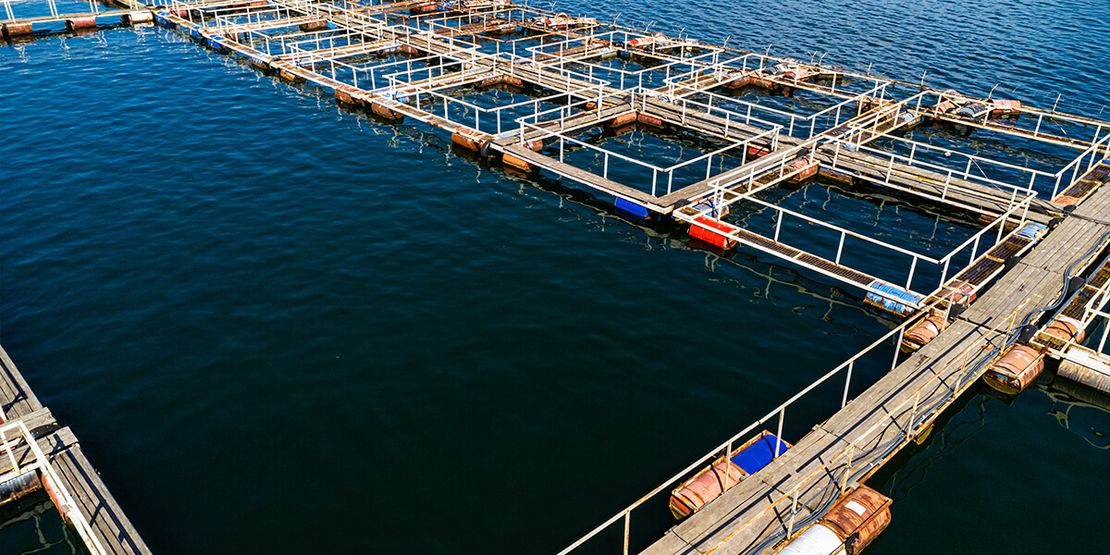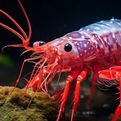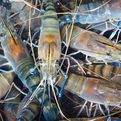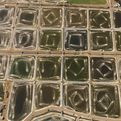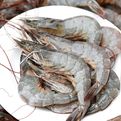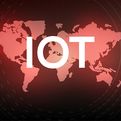Aquaculture Farming: Essential Terms and Definitions for Beginners (Part 1)
Aquaculture: The farming of aquatic animals and plants for food and other commercial purposes.
Benthic: Refers to the bottom layer of a body of water, where aquatic plants and animals live.
Cage Culture: A method of aquaculture that involves keeping aquatic animals in floating cages, such as for salmon or tilapia.
Copper Sulfate: A chemical commonly used in aquaculture to control parasites and bacteria.
Density Dependent Mortality: A phenomenon in which the death rate of aquatic animals increases as the population density increases.
Eutrophication: The process by which an aquatic ecosystem becomes over-enriched with nutrients, leading to the growth of algae and the depletion of oxygen.
Feed Conversion Ratio (FCR): A measure of the efficiency of food conversion in aquatic animals, calculated as the amount of feed consumed divided by the weight gain of the animal.
Filtrate: The liquid waste produced by an aquaculture system.
Hatchery: A facility where aquatic animals are raised from eggs or larvae for later release into the wild or for aquaculture purposes.
Intensive Culture: A method of aquaculture in which a high density of aquatic animals is kept in a small area, often in tanks or ponds.
Larvae: The early life stage of aquatic animals, before they become juveniles or adults.
Monoculture: A method of aquaculture in which a single species of aquatic animal is raised in large numbers.
Nutrient Loading: The process by which nutrients enter an aquatic ecosystem, often as a result of human activities such as agriculture or aquaculture.
Pond Culture: A method of aquaculture that involves keeping aquatic animals in ponds, often with limited water exchange.
Seedstock: The initial stock of juvenile aquatic animals used in an aquaculture operation.
Water Exchange: The process by which water is moved in and out of an aquaculture system, either to control water quality or to mimic natural conditions.
—
Aquaculture – the cultivation of aquatic organisms in a controlled environment
Algae – single-celled plants that are commonly used as a food source for aquatic animals
Bacteria – microorganisms that play a vital role in maintaining a healthy environment in aquaculture systems
Broodstock – adult fish used for breeding and producing eggs for aquaculture production
Carp – a type of freshwater fish commonly raised in aquaculture
Catfish – a type of freshwater fish that is commonly farmed for its meat
Closed System – a type of aquaculture system in which water is recirculated and not exchanged with the environment
Culture Tank – a container or pool used to cultivate aquatic organisms in an aquaculture system
Cyanobacteria – a type of blue-green algae commonly used as a food source in aquaculture
Dissolved Oxygen – the amount of oxygen present in water, which is necessary for the survival of aquatic animals
Eutrophication – an increase in the nutrient levels in water, which can lead to algal blooms and decreased oxygen levels
Feed – the food given to aquatic animals in an aquaculture system
Feed Conversion Ratio (FCR) – the ratio of feed given to the weight gain of aquatic animals
Feedstock – the raw material used to make feed for aquatic animals
Fry – newly hatched fish or shrimp that are used for aquaculture production
Genetics – the study of heredity and variation in aquatic organisms
Hatchery – a facility used to produce and raise aquatic animals for aquaculture production
Larval Stage – the stage of development in which fish or shrimp are in their earliest life stages
Microalgae – tiny algae that are commonly used as a food source for aquatic animals
Net Pens – large underwater enclosures used to farm fish in open water
Nursery – a facility used to raise and care for young aquatic animals before they are transferred to a larger culture tank
Open System – a type of aquaculture system in which water is exchanged with the environment
Oyster – a type of bivalve mollusk that is commonly farmed for its meat
Phototrophic Algae – algae that use light to produce energy through photosynthesis
Pond Culture – a type of aquaculture system in which aquatic animals are raised in man-made ponds
Recirculating System – a type of aquaculture system in which water is recirculated and purified to maintain water quality
RAS (Recirculating Aquaculture System) – a type of aquaculture system in which water is recycled to maintain water quality
Shrimp – a type of crustacean commonly raised in aquaculture
Spawning – the act of producing eggs or sperm by aquatic animals for reproduction
Stocking Density – the number of aquatic animals per unit area in an aquaculture system
Tilapia – a type of freshwater fish commonly raised in aquaculture
Trophic Algae – algae that feed on waste products in aquaculture systems
Aeration – the process of introducing air into water to increase oxygen levels
Algal Bloom – a rapid growth of algae in water, which can have negative impacts on water quality and aquatic life
——-
Aquaculture: The cultivation of aquatic animals and plants, such as fish, mollusks, crustaceans, and seaweed, in controlled environments for food production.
Aquaponics: A type of aquaculture that combines fish farming with hydroponic growing to produce both fish and plants in a symbiotic system.
Fish Feed: Commercial feed pellets specifically formulated for aquaculture species, used to provide them with essential nutrients and energy.
Fry: Newly hatched or juvenile fish used for stocking in aquaculture systems.
Hatchery: A facility used for the artificial production and hatching of fish eggs and the rearing of fry.
Nursery: An area within an aquaculture system used for the rearing and growing of young fish before they are transferred to a grow-out system.
Grow-out: The stage of aquaculture where fish are raised to maturity and reach their target size for harvest.
Harvesting: The process of removing the fish from the aquaculture system for commercial purposes.
Culture System: The type of aquaculture environment used, such as ponds, tanks, cages, or recirculating systems.
Water Quality: The physical, chemical, and biological parameters of the water in an aquaculture system, such as temperature, pH, dissolved oxygen, and ammonia levels.
Biofloc Technology: A type of aquaculture system that uses microorganisms to control water quality and provide food for the fish.
Aeration: The process of introducing air into an aquaculture system to increase oxygen levels and maintain water quality.
De-chlorination: The process of removing chlorine from water used in aquaculture systems to prevent harm to the fish.
Filtration: The process of removing solid and dissolved waste products from an aquaculture system to maintain water quality.
Recirculating System: An aquaculture system that recirculates and reuses the water, reducing water usage and environmental impact.
Water Exchange: The process of removing a portion of the water in an aquaculture system and replacing it with fresh water to maintain water quality.
Dissolved Oxygen: The amount of oxygen dissolved in water, which is critical for the health and survival of aquatic animals.
pH: A measure of the acidity or alkalinity of water, which affects the growth and health of fish.
Ammonia: A toxic waste product produced by fish that must be removed from the water to maintain water quality.
Nitrite: A toxic intermediate product produced by bacteria in the nitrogen cycle that must be removed from the water to maintain water quality.
Nitrate: A non-toxic end product of the nitrogen cycle that can be used as a fertilizer for plants in aquaponics systems.
Salinity: The measure of the amount of salt in water, which affects the growth and health of fish and other aquatic species.
Water Temperature: The temperature of the water in an aquaculture system, which affects the growth and metabolism of fish and other aquatic species.
Algal Bloom: The rapid growth of algae in an aquaculture system, which can reduce water quality and harm fish.
Bacteria: Microorganisms that play a critical role in the nitrogen cycle and water quality in aquaculture systems.
pH Buffer: A substance added to water to maintain a stable pH level and prevent sudden
Riley Sinclair (Digital Aqua Bear)
Hi! I'm Riley Sinclair (Digital Aqua Bear), and I'm exploring the world of digital aquaculture farms. Join me as I delve into innovative methods and sustainable practices for cultivating aquatic life in digital environments. Let's uncover the potential of digital aquaculture farms to revolutionize food production and environmental sustainability.
More From Digital Aqua Farm
Shrimps: Exploring its Culinary Journey from Sea to Table
Riley Sinclair (Digital Aqua Bear)
Blockchain's Impact on Shrimp Farming: Unlocking Transparency and Efficiency
Riley Sinclair (Digital Aqua Bear)
Global Shrimp Industry: Knowing the Key Players and Dynamics
Riley Sinclair (Digital Aqua Bear)
Harnessing IoT Technology: Enhanced Shrimp Farming Efficiency
Riley Sinclair (Digital Aqua Bear)
Shrimp Farming: Essential Terms and Definitions for Beginners
Riley Sinclair (Digital Aqua Bear)
Maximizing Profitability: The Ultimate Smart IoT Controller for Shrimp Farmers
Riley Sinclair (Digital Aqua Bear)


